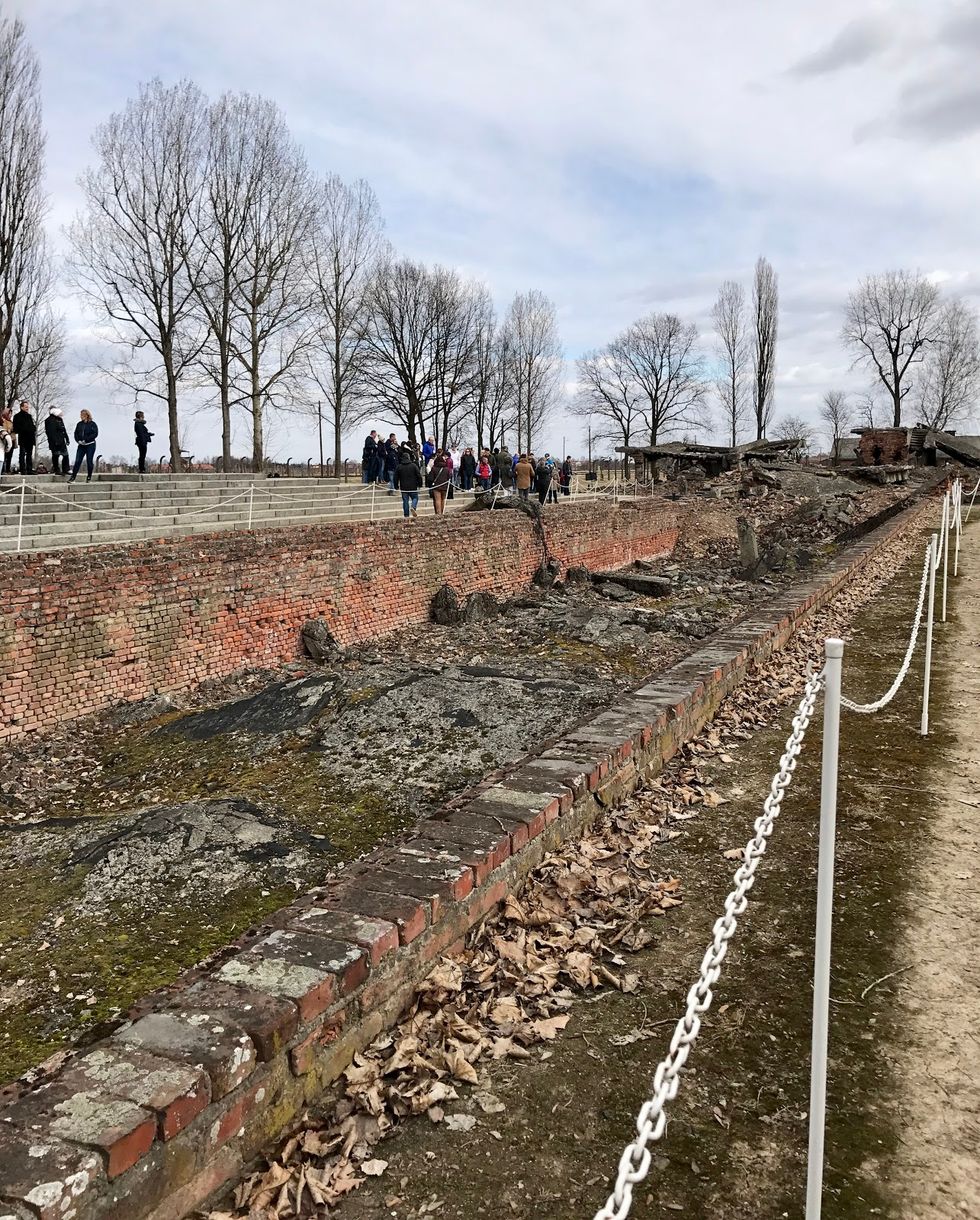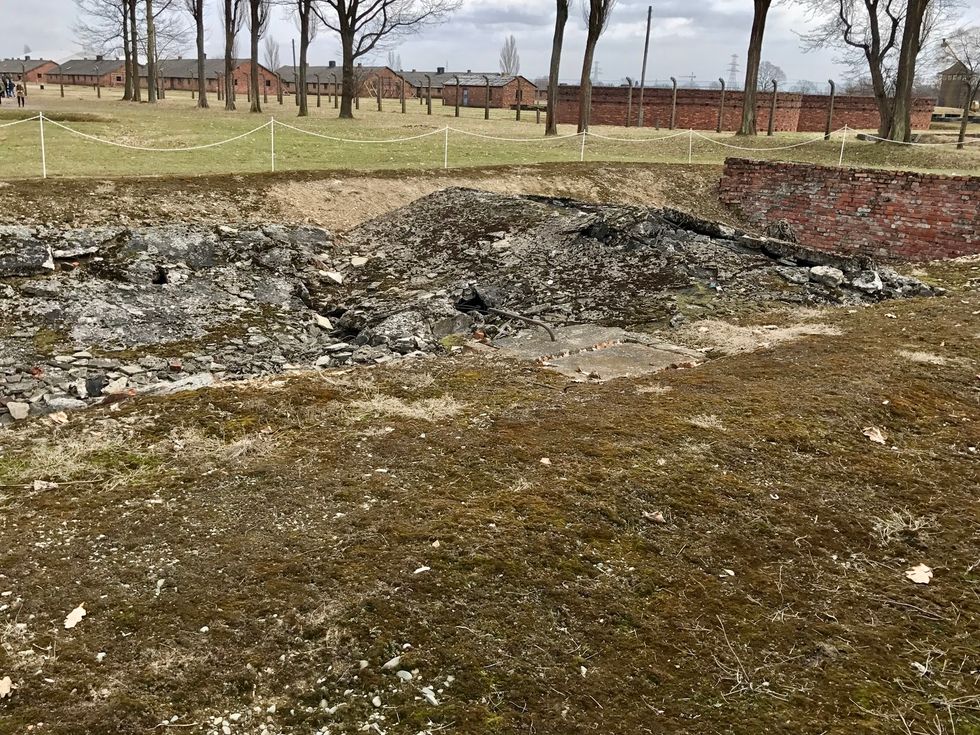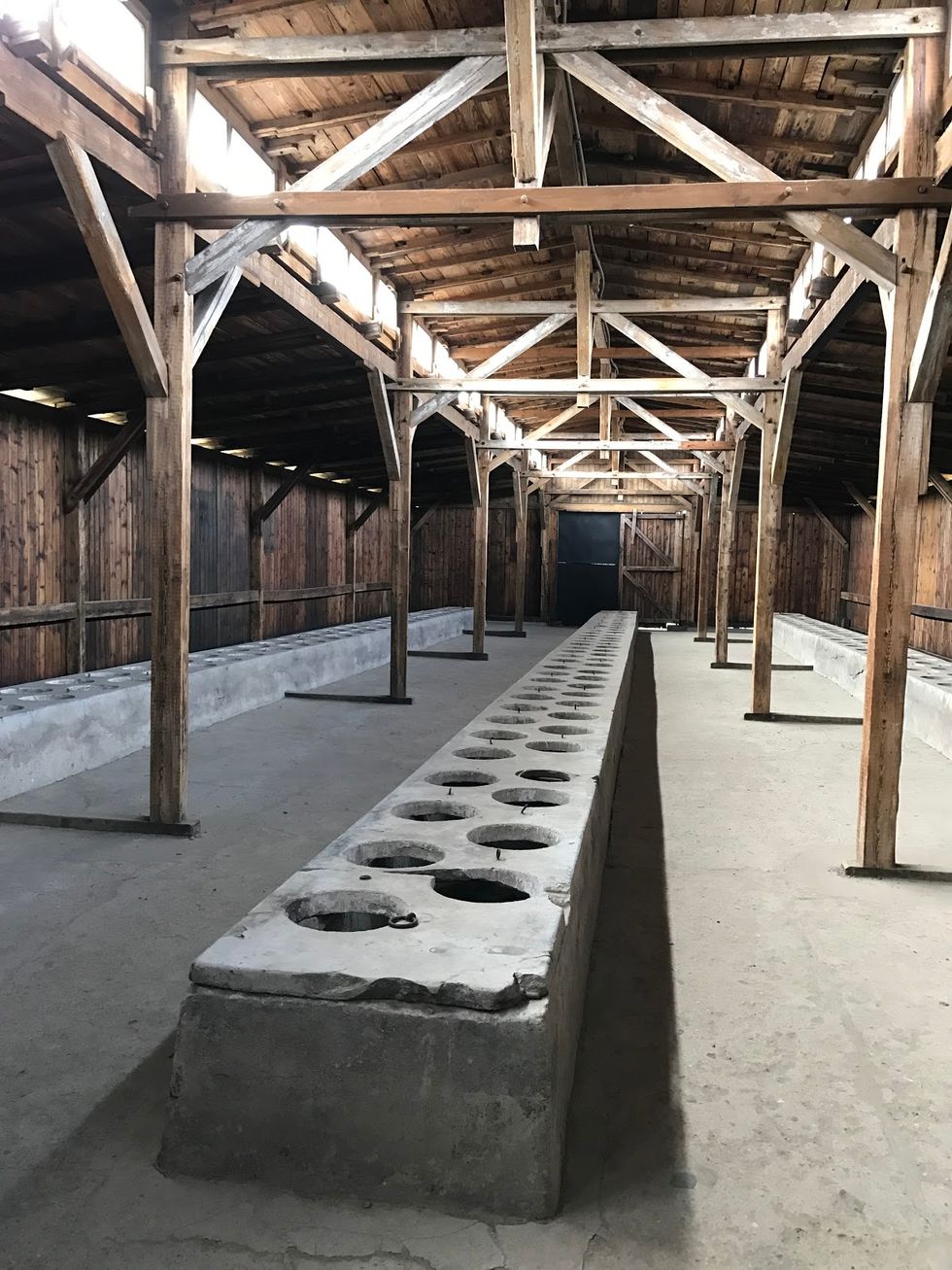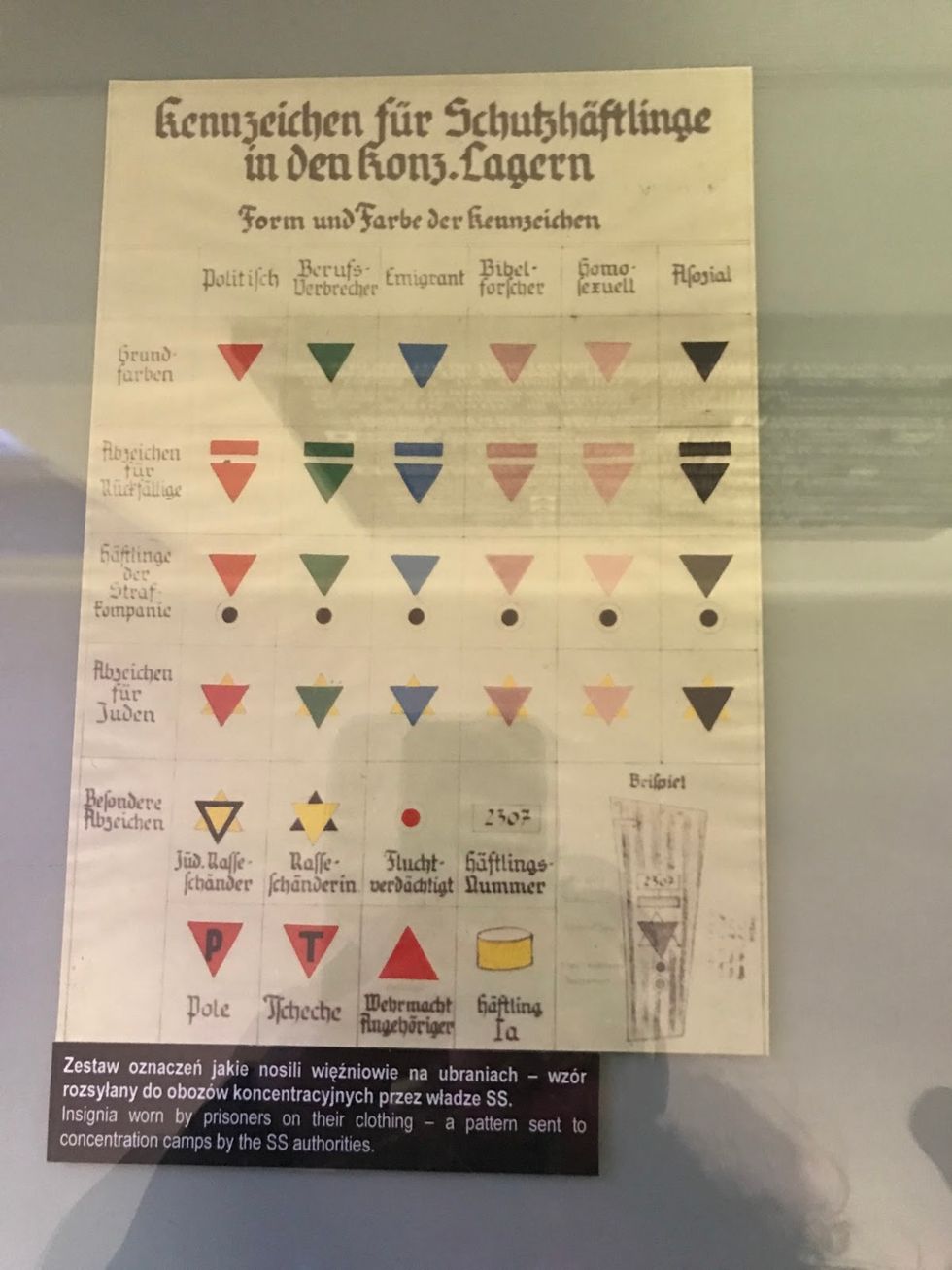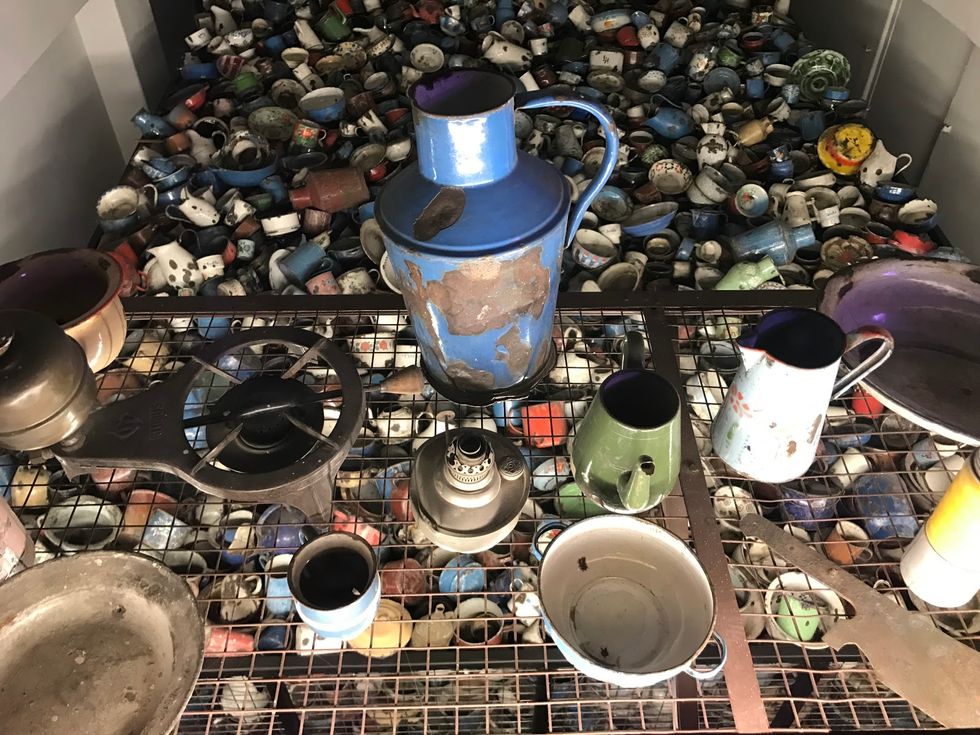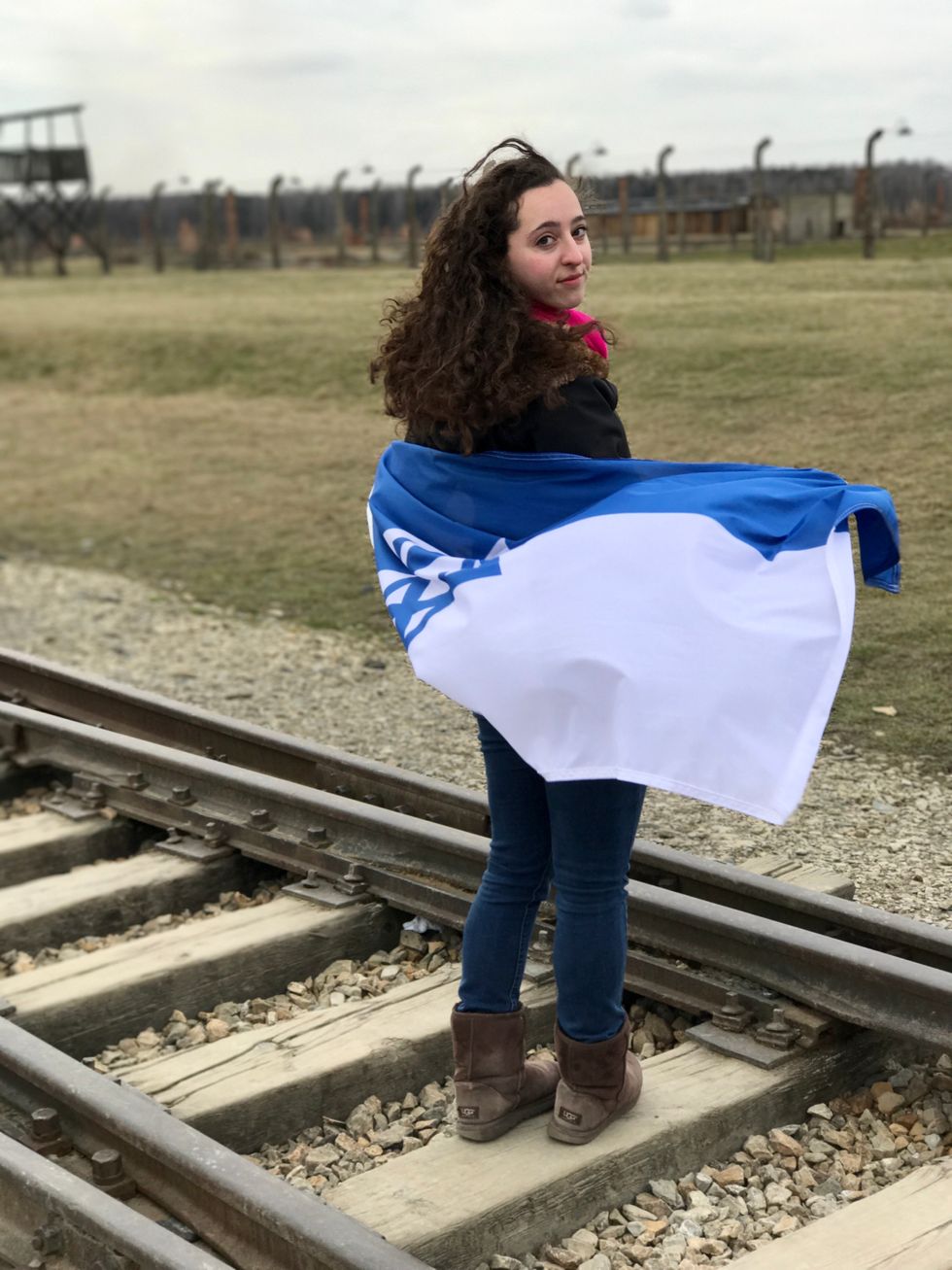Another early morning and a 3 hour drive led us straight to Auschwitz II / Birkenau, the biggest and most well-known camp. It started off as a labor camp, but then transitioned into a death camp. The evidence for the latter was the giant undressing room, in which people stripped themselves and their children, reassuring each other that everything would be okay in the presumed “showers."
Yet these Jews, "selected" by a doctor as the more feeble ones, were to be sent straight to the gas chamber. Rabbi Yitzhak astutely pointed out that the Germans were very calculated in their actions, and that they intentionally made the gas chamber smaller than the undressing room. They did this so that the Jews would rush into there faster, for nobody wanted to be left naked outside of the “showers” while everyone else was inside.
Unlike the gas chambers in Majdanek, which released carbon monoxide, the gas chambers in all of the Auschwitz camps released Zyclon (Cyclone) B, a cyanide pesticide which causes people to die from the inside. In 20 minutes, all those in the gas chamber died, and then the Nazis repeated the cycle with the next batch of Jews ready for the slaughter.
The Rabbi told us that in all of Auschwitz's history, there was one girl who survived the gas. It was a miracle that she, while harmed, left the chamber still alive, and this gave the other Jews in the camp hope. She was taken to the doctor and resuscitated, and she could have begun a life in the camp.
But she was shot.
The Nazis couldn’t let her live, having experienced the gas chamber. And the people who did live really had to struggle and be clever.
The Rabbi told us that in the camps, there were 4 keys to enhance your chance of survival:
1. Know German (to understand what the guards were saying).
2. Get extra food (so that the ribs don’t show).
3. Communicate with Poles / people not in the camp (to get extra food, etc).
4. Work inside (to survive the cold).
In addition to meeting the basic survival needs of staying warm and being fed, the Jews in the camps also struggled to meet another need: going to the bathroom.
In Auschwitz II / Birkenau, there were no bathrooms. People had to go to the bathroom in a room with many rows of holes, and they didn’t have any toilet paper.
The Rabbi told us an interesting story about a girl who shared a bed with another girl who had a birthday. The girl worked in the ‘Canada’ barrack, a place where the Jews’ goods were sorted into piles of most desirable, average, and not-so-desirable items. Sometimes, the Jews who worked in Canada were able to take goods (such as sweaters) for themselves or even bring some things back for the others. For the birthday girl, the girl who worked in Canada brought her back the best present she could have imagined: toilet paper.
Auschwitz II / Birkenau really does seem like a different world.
Also in regards to bathrooms (a lovely topic), the Rabbi told us that most women stopped having their periods due to stress and emaciation. Additionally, he shared that if ever a woman got pregnant, she would have an abortion; it would save her life because otherwise, she and the baby would be gassed. However, there was once one woman who had a baby. The lady who performed the abortions in Auschwitz II / Birkenau came to meet her. She held up the baby and plunged it into the latrine, killing it, to save the mother's life. She said that she was sacrificing one life for another. Later, after the Holocaust and WWII had ended, the abortion lady started an abortion clinic in NYC. The woman who had had the child in Birkenau was pregnant again and came by the clinic. The abortion lady delivered the baby, held it up (just as she had the last one), and said that this is the life that was saved.
Sacrifice and survival made for an interesting balance in the camps.
We then went to Auschwitz I, which was essentially a multi-barrack museum. It was more preserved, externally, than the other camps we had visited, and it contained many artifacts from the Holocaust inside.
Auschwitz I started off as a concentration camp for dissenters throughout Poland and the surrounding countries, and then it eventually transitioned into a death camp. While the Holocaust camps are often generalized today to all be concentration camps, concentration camps specifically refer to those with the intent of “re-educating” the German enemies, like Auschwitz I. Another generalization is that all people who were in Holocaust camps were tattooed. This occurred in Auschwitz, particularly in the latter years, but branding did not occur in any of the other camps. These generalizations likely occurred because Auschwitz is incredibly famous and because there is little known about some of the other camps. For example, there were only 3 survivors in one particular camp, since all of the other people were immediately gassed.
Auschwitz I consisted of many different types of people, as indicated by the different badges they wore. For example, a red downwards triangle indicated a political prisoner, a yellow triangle with a red downwards triangle was the mark of a Jew, and a pink triangle was worn by a homosexual.
In the rooms in the museum-like Auschwitz I, we saw such items as 2 tons of hair, shoes, pretty china, glasses, and tallits.
We also walked through cramped prison cells, so tiny that even I (at a mighty 5’ 1”) could have barely fit into them.
But the emaciation probably helped with the space issue. Given nearly no food, those who were selected to work at Auschwitz I withered away. Throughout the museum, we witnessed the horror that was the plethora of bulging ribs surrounding us in every photograph, sculpture, and sketch.
Yet one of the worst things we learned about were the experiments on the Jews conducted especially by German Dr. Josef Mengele. He experimented particularly on the emaciated Jewish women and children. His experiments did not yield conclusive results, but his work caused many Jews either permanent damage or death, which I suppose achieved the Nazis’ aim after all.
In Auschwitz II / Birkenau and in Auschwitz I, we saw what happened when the Nazis broke the Jews. We saw the remnants of what once was real live human beings. We saw shaved heads and baggy, blue-and-white striped pajamas that were reused without being washed when a prisoner died, hand-me-downs for the next victims. We saw faces awash with pain and sorrow. And yet the Jews struggled to survive and we are still here today despite the Nazis’ attempts to eradicate us all.
The two camps were connected by railroad tracks. Along the tracks lie millions of small gray stones, which we stepped on during our time in the camps as easily as the Nazis did Jews. The railroad tracks were once used to ship the Jews from their homes to the camps or from one camp to another. We don’t use them anymore, thank goodness. But they remain, firmly rooted in the ground, for us to walk along, to hop from one wooden plank to the next, and to remember the stories that lie buried in the stones along the tracks.

